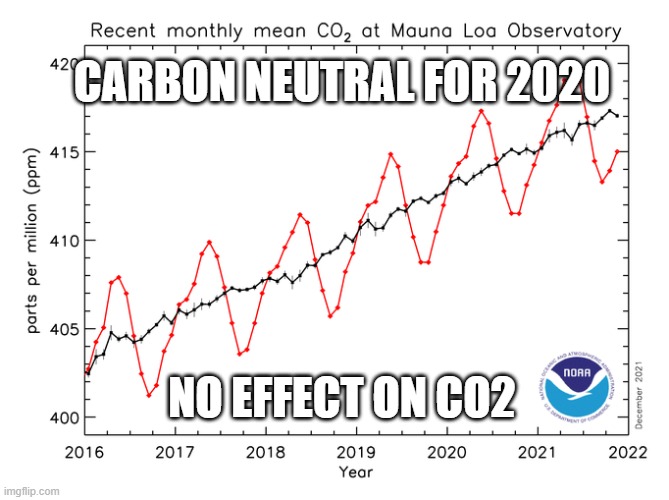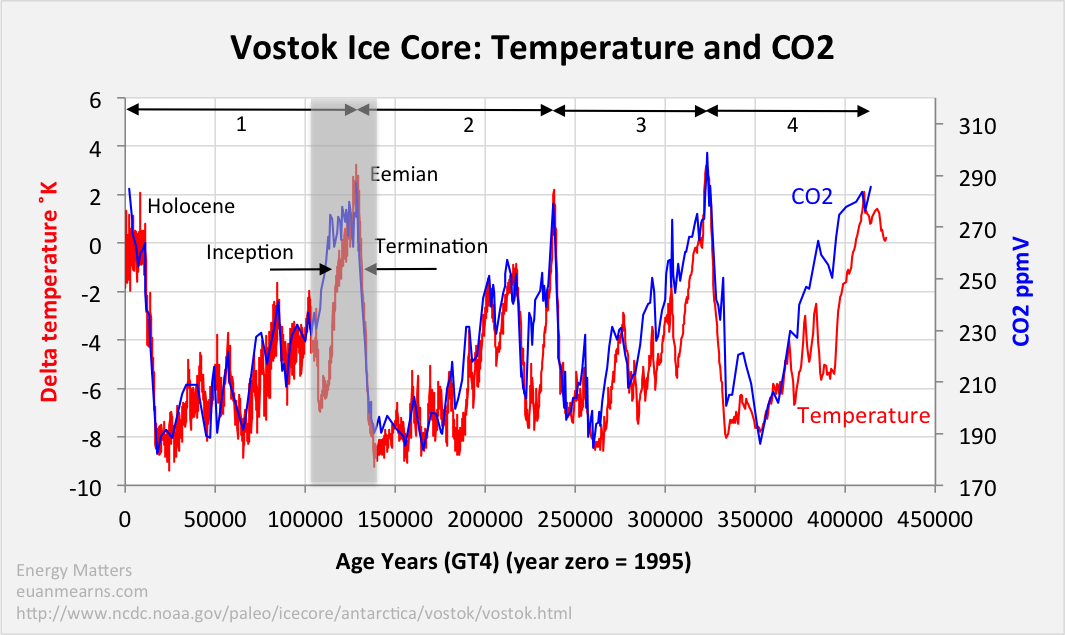- Mar 3, 2006
- 7,216
- 2,565
- 315
- Thread starter
- #941
Really? 1880-2013 (Columbia Climate and 100 others). After the industrial revolution the correlation was broken...
Follow along with the video below to see how to install our site as a web app on your home screen.

Note: This feature currently requires accessing the site using the built-in Safari browser.
Really? 1880-2013 (Columbia Climate and 100 others). After the industrial revolution the correlation was broken...
Really?Prior to the industrial revolution CO2 was a proxy for temperature due to the solubility of CO2 in water with CO2 lagging temperature by ~800 years. After the industrial revolution the correlation was broken...
Really? 3Prior to the industrial revolution CO2 was a proxy for temperature due to the solubility of CO2 in water with CO2 lagging temperature by ~800 years. After the industrial revolution the correlation was broken,,,
You are confusing natural variations with CO2. Climate fluctuations and environmental uncertainty are hallmarks of our bipolar glaciated world.
It's game overYou are confusing natural variations with CO2. Climate fluctuations and environmental uncertainty are hallmarks of our bipolar glaciated world.
View attachment 578116
Yes, really. We are 2C below past climates with 120 ppm more CO2. Again... You are confusing natural variations with CO2. Climate fluctuations and environmental uncertainty are hallmarks of our bipolar glaciated world.
Feel free to quit anytime you want.It's game over
I showed lock step graphs POST-industrial revolution.
You LOST Dingo
`
You can lead a stubborn jackass to temperatures tracking right along with CO2 changes till the cows come home. Result will still be: deny, deny, deny!It's game over
I showed lock step graphs POST-industrial revolution and could post 100 more.
(and you UNWITtingly posted an older one of hundreds showing 100K year Lock Steps).
You LOST Dingo.`
1) Isotopic analysis shows that every bit of CO2 in the atmosphere ABOVE the 280 ppm that existed prior to the Industrial Revolution is the result of fossil fuel combustion.
2) ALL of the Earth's radiated IR is absorbed by CO2, water vapor, methane and other trace GHGs in the atmosphere long before escaping to space. This is proof of the Greenhouse Effect.
3) The Greenhouse Effect HAS been demonstrated in the lab. Ask Google or just search YouTube. That you should think otherwise tells me you've never looked or have chosen to lie.
4) The Earth's temperature has been rising at an unprecedented and accelerating rate since the beginning of the Industrial Revolution. That point has been determined by more than half a dozen national and academic science institutions with almost identical results.
5) The rise of sea level due to thermal expansion and ice melt primarily from Antarctica and Greenland is accelerating and is taking place at a rate that has not been seen since well before the rise of homo sapiens

Science is never settled.You can lead a stubborn jackass to temperatures tracking right along with CO2 changes till the cows come home. Result will still be: deny, deny, deny!
It's game over
I showed lock step graphs POST-industrial revolution and could post 100 more.
(and you UNWITtingly posted an older one of hundreds showing 100K year Lock Steps).
You LOST Dingo.
`

^ I have peer reviewed the above post and find it 100% accurateScience is never settled.
Given the many valid dissenting scientific opinions that remain on these issues, we argue that recent attempts to force an apparent scientific consensus (including the IPCC reports) on these scientific debates are premature and ultimately unhelpful for scientific progress. We hope that the analysis in this paper will encourage and stimulate further analysis and discussion. In the meantime, the debate is ongoing.
ShieldSquare Captcha



I've seen people with dementia make more sense than some of your posts.
Predatory publishing - Wikipedia
en.wikipedia.org
Stop Predatory Journals